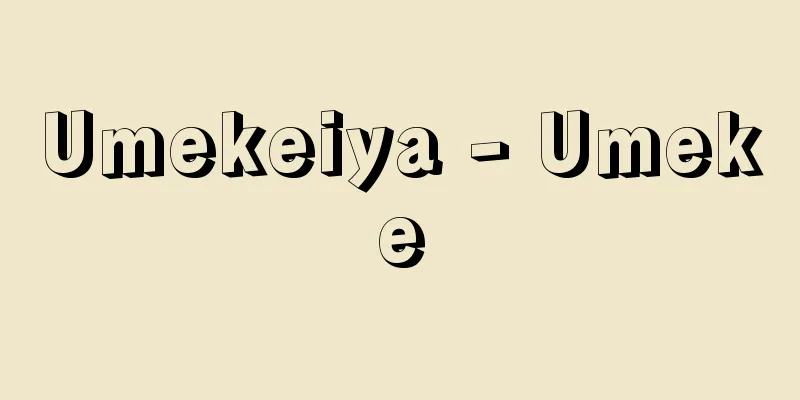Frustration - Furasutore-shon (English spelling)

|
Originally a psychoanalytic term, it is translated as "frustration" or "thwarted demands," and is a comprehensive term that refers to environmental situations that thwart desires, the internal state of an individual placed in such a situation, and the resulting reactions. In general, however, the term "frustrated" is often used to describe a hopeless, helpless state of mind in which the satisfaction of desires cannot be achieved due to some kind of obstacle. The hindrances and obstacles that cause frustrating situations are not necessarily objectively real things or people. They can also be caused by subjectively feeling or thinking that they are hindrances or obstacles. Furthermore, obstacles are not always external, but can also be internal to the individual, such as a lack of ability. [Shozo Tsuji] Theories of frustration behavior(1) Frustration → Aggression Hypothesis This hypothesis posits that the occurrence of aggressive behavior is always predicated on the presence of frustration, and conversely, the presence of frustration will always result in some form of aggression. Aggression is usually directed at people or objects that are obstructing or getting in the way, but if this is prohibited or the other party is powerful, aggression toward other people or objects will occur as a compensatory behavior. An example of this is when a child who is turned down by his mother for a snack takes out his frustration on his innocent younger siblings. (2) Frustration → Regression Hypothesis This hypothesis posits that frustration causes the ego structure to regress to an undifferentiated, underdeveloped stage, resulting in immature behavior. An example of this would be a child who was loved and raised as an only child, but who loses parental attention after the birth of a younger sibling and reverts to thumb sucking and bedwetting, reverting to the behavior of a child younger than him or her. (3) Frustration → Abnormal Fixation Hypothesis This hypothesis regards behavior in a frustrating situation as "goalless behavior" that has lost motivation, and states that meaningless responses are abnormally repeated and persisted in. Examples of this would be when a person is unable to solve a puzzle and continues to meaninglessly repeat operations that do not contribute to the solution, or when a fire breaks out in a theater and the audience rushes to the narrow emergency exit, repeatedly pushing and shoving each other. [Shozo Tsuji] Types of frustration behaviorIt is not easy to decide which of aggression, regression, or abnormal fixation is the main cause. It depends on the person and the situation. Also, even if people are in the same situation that is likely to cause frustration, some people calmly solve the problem, and there are individual differences in the degree of frustration. American psychologist Rosenzweig calls this "frustration tolerance." He divides reactions to frustration into three basic types: a type that insists on satisfying desires, a type that defends itself from being hurt, and a type that is obstacle-dominant, emphasizing the existence of an obstruction; and three reaction types: an externalizing type in which attacks are directed at the outside environment, an internalizing type in which attacks are directed at oneself and have a strong sense of self-blame, and a non-punitive type in which attacks are not directed at anyone and the problem is plausibly diverted. [Shozo Tsuji] Source: Shogakukan Encyclopedia Nipponica About Encyclopedia Nipponica Information | Legend |
|
本来は精神分析学の用語で、欲求不満、要求阻止などと訳され、欲求を阻止するような環境状況をさしたり、そのような状況に置かれた個人の内的状態や、その結果として表出される反応をさしたりする包括的なことばである。しかし一般には、欲求の満足がなんらかの障害によって達成できなかった八方ふさがりのやりきれない心境を、「フラストレーションに陥った」というように表現する場合が多い。フラストレーション状況を引き起こす妨害や障害は、かならずしも客観的に実在する事物や人とは限らない。主観的に妨害や障害と感じたり考えたりすることによっても引き起こされる場合がある。また、障害はいつも外部にあるわけではなく、能力の欠如のように本人の内部にあることもある。 [辻 正三] フラストレーション行動の諸説(1)フラストレーション→攻撃仮説 攻撃行動の生起にはつねにフラストレーションの存在が前提とされており、またその逆にフラストレーションが存在すれば、つねになんらかの形式で攻撃が生じるとする説。攻撃は普通、妨害や障害になっている人や物に向けられるが、それが禁止されたり相手が強力であったりすれば、他の人や物に対する攻撃が代償行動として生じる。母親におやつをねだって断られた子供が、八つ当たりで罪のない弟や妹をいじめたりするのがその例である。 (2)フラストレーション→退行仮説 フラストレーションは、自我の構造を未分化、未発達な段階に後戻りさせ、未成熟な行動をおこさせるとする説。ひとりっ子としてかわいがられて育てられてきた子供が、弟妹の誕生によって親たちの関心がそのほうに奪われてしまい、以前のようにかまってもらえなくなると、指しゃぶりや夜尿を再発し、自分より幼い子供の行動に逆戻りする場合がこれにあたる。 (3)フラストレーション→異常固着仮説 フラストレーション状況での行動を動機づけを失った「目標のない行動」とみ、無意味な反応が異常に反復固執されるとする説。「知恵の輪」が解けず解決に役だたない操作を無意味に繰り返したり、劇場で火災が生じ、観客が狭い非常口に殺到してむやみに押し合いを繰り返していたりするのが、その例である。 [辻 正三] フラストレーション行動の類型攻撃、退行、異常固着のうちどれがおもなものかは、簡単には決められない。人によっても事態によっても異なる。また、同じくフラストレーションのおこりそうな状況に置かれても、人によって冷静に問題を解決する者もいるし、フラストレーションの程度にも個人差がある。アメリカの心理学者ローゼンツワイクは、これを「フラストレーション耐性」とよんでいる。彼は、フラストレーションに対する反応を、あくまで欲求の満足に固執する型、自我を傷つけないように防衛する型、妨害者の存在を強調する障害優位型の三基本型と、攻撃が外の環境に向けられる外罰型、攻撃を自分に向ける自責感の強い内罰型、攻撃をどこへも向けず問題をもっともらしく紛らしてしまう無罰型の三反応型とに分けている。 [辻 正三] 出典 小学館 日本大百科全書(ニッポニカ)日本大百科全書(ニッポニカ)について 情報 | 凡例 |
Recommend
Mallophaga
...A general term for parasitic insects belonging...
Akokanchin - Akokanchin
... The genus Acokanthera has about three species...
Chrysanthemum yezoense (English spelling) Chrysanthemum yezoense
…[Nitta Aya]. . . *Some of the terminology that m...
Neoditrema ransonneti (English spelling)
...Late spring, when the fish are pregnant, is co...
Kobayashi
One of the surnames. [Additional information] Peop...
Xiang Yu
He was one of the heroes who appeared during the ...
Fire-grilled - Ohitaki
Also written as Onitaki. A fire festival held in N...
Zygospore
…When sexual reproduction occurs, reproductive or...
Sickle spear - Kamayari
A type of spear, a general term for spears with a...
Yasuyuki Namikawa
Year of death: May 28, 1927 Year of birth: 1845 A ...
Family Income and Expenditure Survey
This survey is conducted to compile "househo...
Palace (Punishment) - Kyu
… Torture Trial [Yoshio Hiramatsu] [China] The re...
Impulse (physics) - Impulse
…It refers to a voltage waveform with a short dur...
Sign - Fugo
〘noun〙① A sign. A mark used to check the relations...
Bowra, CM (English spelling) BowraCM
…Those who are elected are often poets well verse...





![Higashikurume [city] - Higashikurume](/upload/images/67cc998a462bb.webp)



